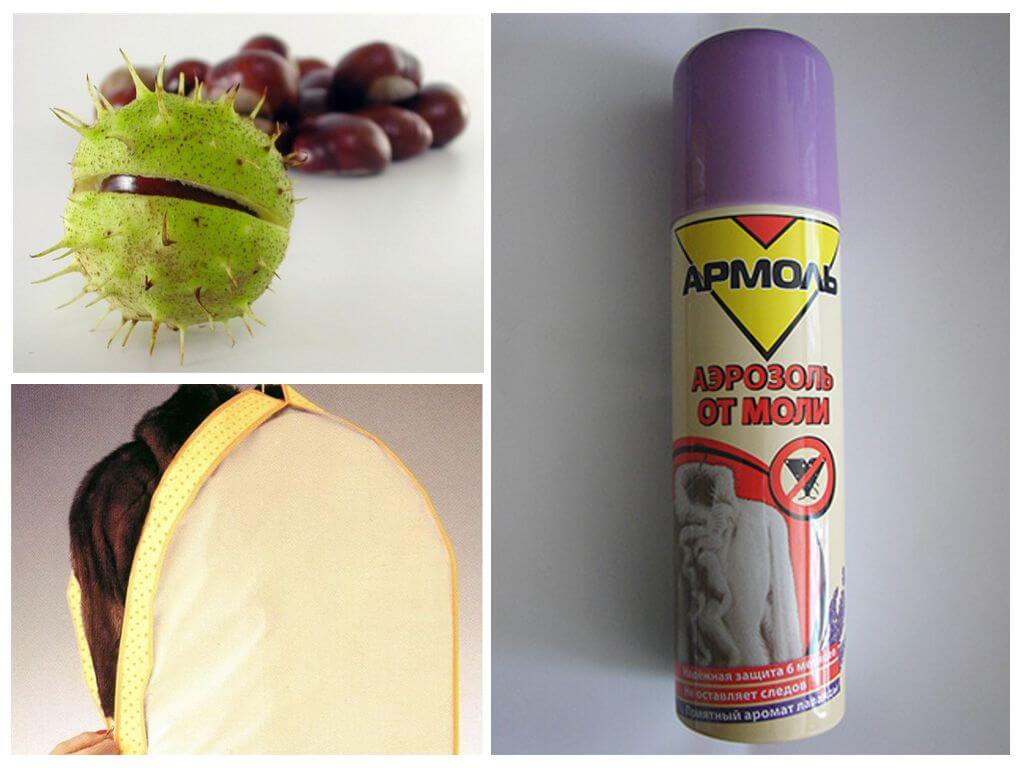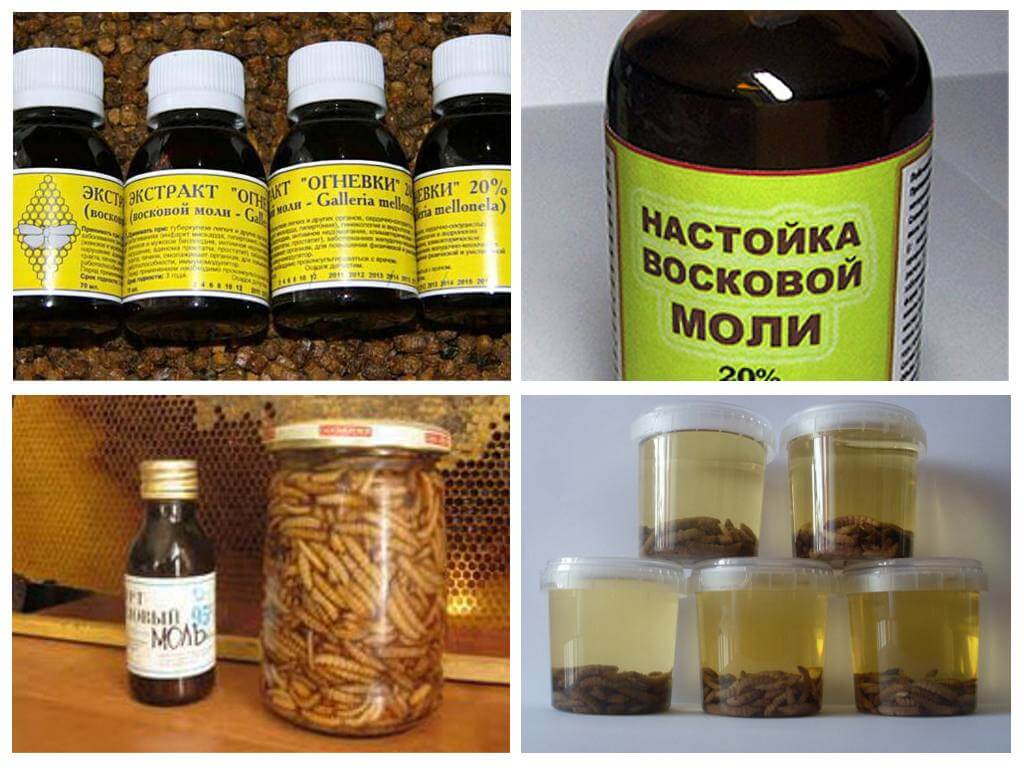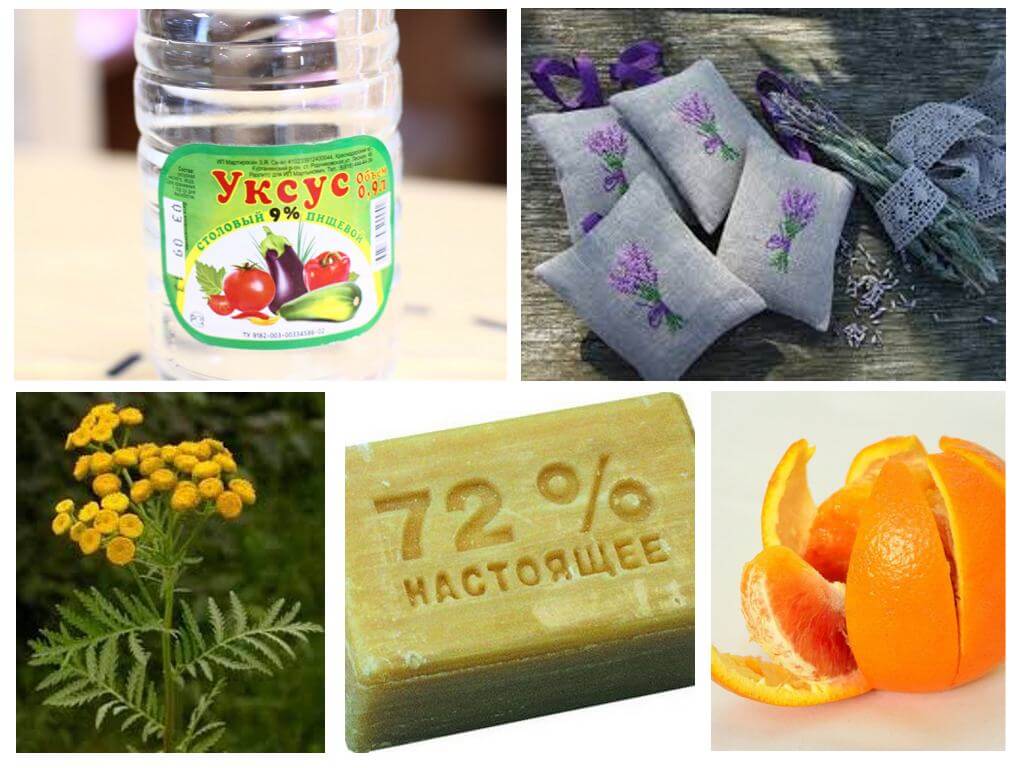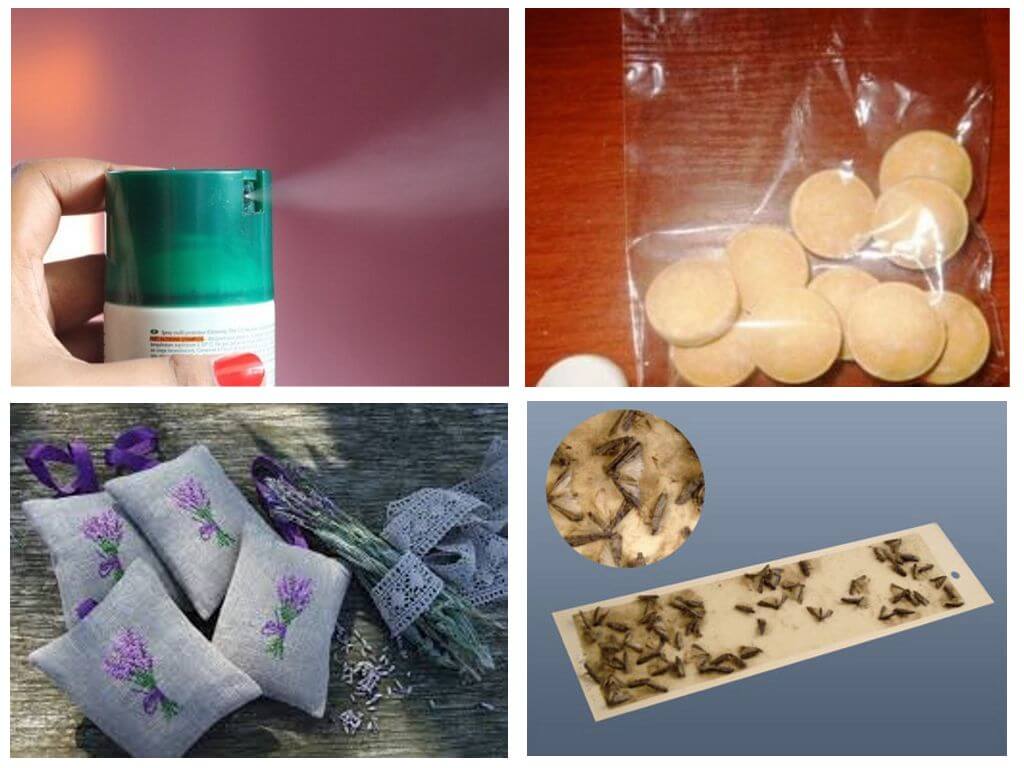- Clothes and food moth
- Chestnuts and essential oils
- Sagebrush
- Moth grass
- Plants against moths
- Preventative measures
Intimate acquaintance with the enemy

The family of true moles (Tineidae) has 2,000-3,000 species. These butterflies are found everywhere, eating dry mushrooms, grains, keratin containing animal remains (fur, wool, fluff, feather). You can meet family members in animal burrows, bird nests, bat caves. But for a person, the most unpleasant apartment neighbors are clothes, fur, carpet and food moth, varieties of which prefer to live in the kitchen: cereal, fruit, flour.
Interesting!
A reliable fact is described when a moth, without harm to itself, ate dried snake venom. There are legends about the omnivore of moths, but she eats only those things or products where colonies of molds are found.
Repellent plants do not kill the insect, but scare them away with their smell. The moth has many sensilla on the antennae and even the front paws - olfactory elements that can smell in the smallest concentration. The sensitivity of the organ of smell in butterflies is 100 times greater than the human. Therefore, a strong smell can scare away insects from the closet with clothes or cereals.
Butterflies flying in an apartment are mainly males. Females prefer to hide in the folds of clothes and crawl from thing to thing. The adult is an adult insect that does not spoil food or tissue, since the digestive organs and oral apparatus of it are reduced. The main enemy is moth larva. Developed jaws allow her to gnaw holes even in plastic bags that protect things.
How plants fight moths
Plants produce aroma due to a mixture of organic substances, which are essential oils. Essential oil accumulates in flowers, leaves, seeds, fruits, roots. In different organs of the same plant, the oil content is different, therefore, in order to effectively fight moths, you need to know which part of the plant to use against the pest.
Interesting!
Neuroscientist J. Mainland, conducting research in models with insects, notes that the moth can sense literally one odor molecule at a distance of a mile. Consequently, the insect will feel the volatiles of the essential oil of the plant even in a tightly locked cabinet.
Do not focus on your sensitivity to smells, since the fruits of the chestnut for the human sense of smell are odorless, and the moth leaves the house in which the chestnuts are laid out.
Plants can only scare away pests, therefore, the folk method of fighting moths is better used for prevention. To enhance the effectiveness of the method, it is necessary to exclude the possibility of the appearance of moths in the apartment - Store clothes in storage only clean, if possible, treated with special chemicals or a solution of essential oil. Store products in a glass container. Clothing or foods that do not have mold are uninteresting for moths.
What plants will help fight moths
Repellent plants can be found everywhere. They grow in meadows and fields, bloom in the flowerbed near the house, decorate the window sills of the apartment. Many of them have long been used as effective. folk remedy for moth control. Consider in detail where you can find helpers.
Wild repellents
Sagebrush. Along the roadsides, on the fallows and in between you can see silver bushes of wormwood. Its strong specific aroma repels not only the clothes moth. Wormwood has long been used as an insecticide and phytoncide in the fight against pests in the garden. No wonder the English name of the plant (wormwood) is composed of two words, which in translation means worm - worm, wood - wood, forest. To control the moth, the aerial part of the plant, dried in a shaded, ventilated place, is used. Twigs can be laid out in cabinets or made into sachets that can be hung on hangers, placed in fur coat pockets or inside bags with woolen clothes. Wormwood from a moth needs to be changed periodically, since essential oils disappear with time. Now flower growers have bred and cultivate varieties of decorative wormwood, which retains the properties of an insecticide, but has very unusual spectacular leaves. The plant can be grown as a houseplant, then it will fight insects throughout the entire growing season.
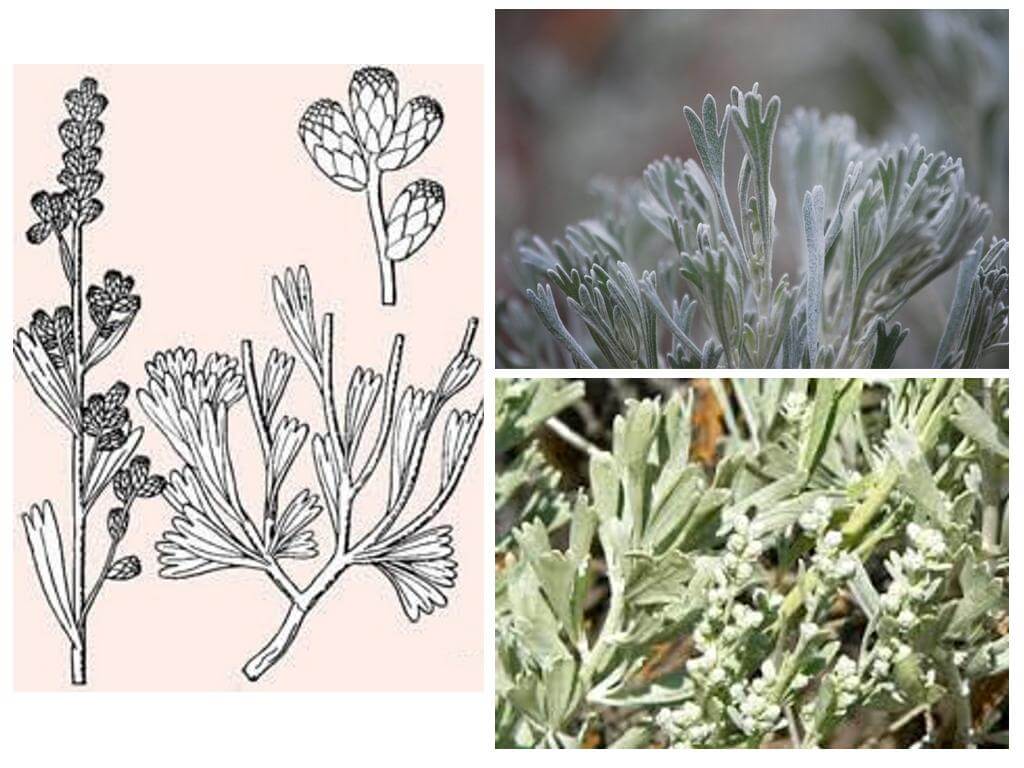
Interesting!
Mages believe that in a house in which many moths appeared, dysfunctional energy. The dark aspects of the consciousness of the owners of the house are activated, which do not allow dreams and desires to come true. Wormwood, magicians use to cleanse a person’s spirit from filth - to purify a person, then the mole will also disappear.
Melilot. In addition to wormwood from moths, sweet clover is used. Dry grass and clover flowers sprinkle clothes. The popular name of the plant is molar grass. Due to the large amount of coumarin, the flowers of the plant have a pleasant, persistent aroma.
Oregano. From time immemorial, packing clothes in a chest, housewives shifted things with dry flowering branches of oregano ordinary. The insecticidal properties of the plant reflect the popular names. So in Bashkortostan, oregano is called the flea shrub, and in Karelia - the bug grass.
Chamomile. Adults and larvae are afraid of the smell of chamomile. Among the species diversity of this plant, three types of chamomile - Dalmatian, pink and meat-red are used not only among the people. On the basis of powder from crushed flower baskets, an insecticidal preparation for combating household insects is produced industrially - Flitsid. Chamomile powder - pyrethrum is used to prepare an alcoholic extract or pyrethral extract. Adding a small amount of the extract to the rinse water will keep the woolen things from pests. It is possible to make sachets from feverfew - fabric pads filled with fragrant powder.

Ledum is swamp. In spring, peat bogs and wet forest clearings are covered with a fragrant white carpet. It blooms ledum marsh. From the moth, dried crushed flowers are used and at the same time branches of rosemary are laid out on the shelves. From flying butterflies, fumigation with the powder of the leaves of the plant is used.
Among wild plants, many have insecticidal properties:
| Plant name | Applicable part | Term of use |
| Tansy | inflorescences | 1,5-2 months |
| Anthelmintic Mary | Flowers, grass | 1,5-2 months |
| Small canadian canadian | Flowers, grass | 1,5-2 months |
| Leucanthemum | Flowers, grass | 1,5-2 months |
| Thermopsis lanceolate | Flowers, grass | 1,5-2 months |
| Yarrow | Flower baskets, grass | 1,5-2 months |
| Lavender | Flowers, essential oil | 1,5-2 months |
| Common spruce | Shoots | 1-1.5 months |
| Balsam fir | Shoots, essential oil | 1-1.5 months |
| Horse Chestnut | fruit | Until next season |
| Wild strawberry | Soap, dry perfume | As the odor disappears |
Moth Home Plants
In addition to dry herbs and essential oils, insect repellent phytoncides of some decorative indoor plants.
Lily. In ancient Greece, this flower was considered a symbol of purity and tenderness. They decorated the coat of arms of the kings of France. Tender lily has long been grown by gardeners, and now a fragrant flower adorns the windowsills of city apartments. This bright indoor flower from a moth has many species - amaryllis, hippeastrum, eucharis, gimenokallis.
Myrtle. The compact tree of lemon myrtle is appreciated not only due to the abundant flowering and aroma of lemon. The flower repels butterflies due to the high content of aldehydes citral and citronellal, which give the essential oil a lemon scent. Oil can be used to soak pieces of natural fabric or cotton balls. Spread out in a closet, they not only scare away the moth, but also give things a pleasant aroma.

Plectranthus. An unpretentious plant with pubescent oval leaves that emit a delicate aroma of mint is popular with gardeners. The plant is called plectrantus. There are several types of plants cultivated at home, but Shrub plectrantus has the most pronounced insecticidal properties.
Geranium. Moth repels the smell of geranium. It is enough to place one flowerpot on the window sills per room and the clothes, fur coat, grain moth will disappear from the apartment forever. Mistresses also grow flowers from moths like pelargonium, rosemary, oleander.
In addition to indoor plants in pots, you can grow aromatic herbs - sage, rosemary, mint, which will help fight moths all year round.
Important!
Fragrant herbs and dry perfumes will not help if larvae have already hatched from butterfly eggs. They have nowhere to go from a closed cabinet, so they have to adapt to insecticides. Each subsequent generation of pests becomes less sensitive to the smell of repellents.
In a clean, dry, well-ventilated area, moths rarely start. Therefore, compliance with simple storage rules for things and food stocks will eliminate the risk of pest infection.
Storage and Care
- Before you send a thing for storage, it must be washed and rinsed in a decoction of fragrant herbs. Furs before being placed in a special case can be treated with Antimol spray and the fruits of horse chestnut can be put into pockets.
- Over time, essential oils evaporate and plants lose their insecticidal properties. It is necessary to replace exhausted sachets or sachets of herbs with fresh ones in a timely manner. To avoid stains on clothes due to contact with essential oil, cotton balls soaked with cotton and cloth can be wrapped with foil.
- If you periodically ventilate and dry the outer clothing of wool and fur, the moth larvae will die. Even vigorous shaking of products will eliminate gluttonous parasites.
- Moth freezing can not always save things, as some of its types are not afraid of low temperatures. But steaming does not only remove the larvae, but also damages the egg laying.
- Kitchen and wardrobe cabinets should be periodically washed from the inside with decoctions of herbs, a solution of table vinegar or laundry soap. Thorough cleaning and airing of rooms will forever save the house from silver moths.






